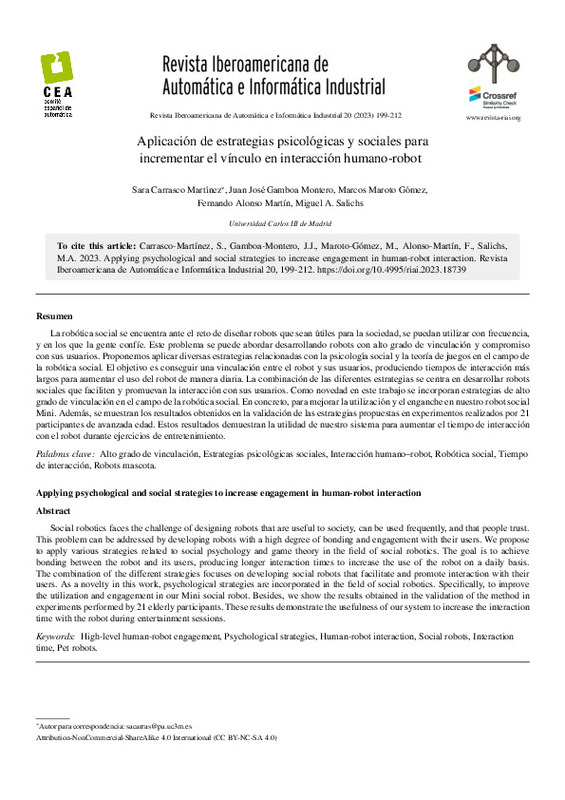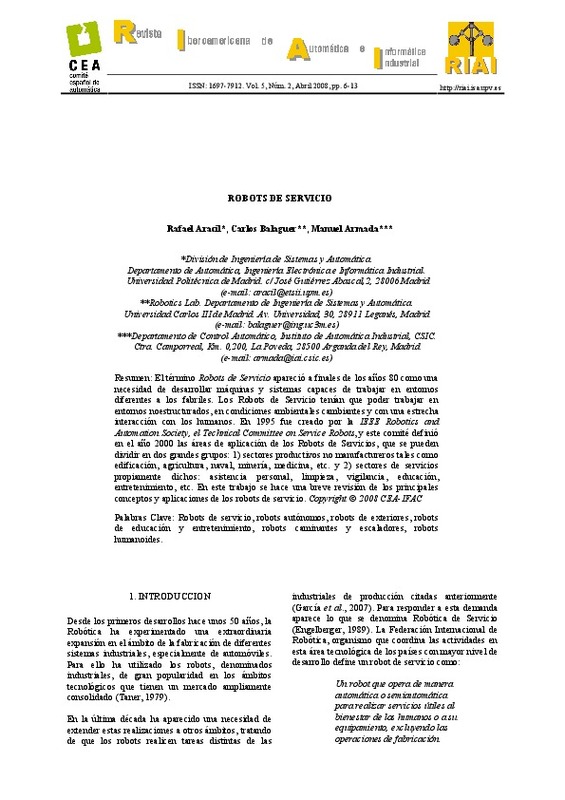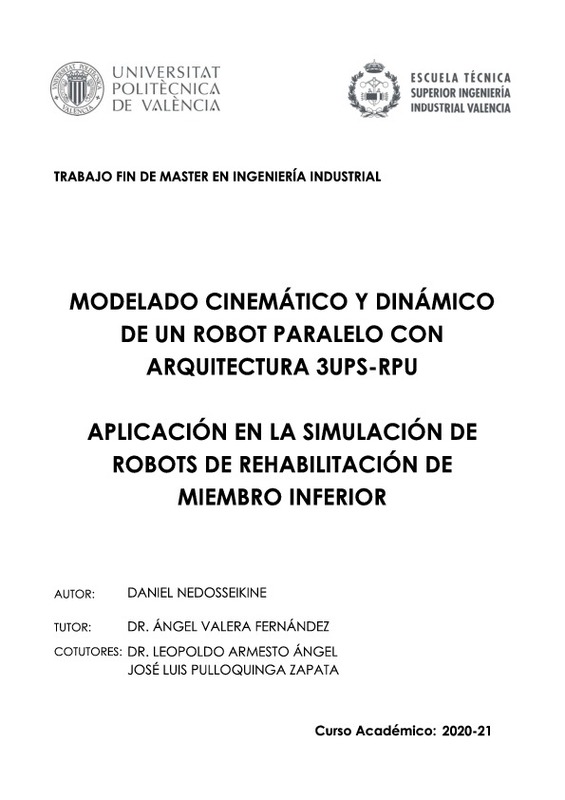Barrett, D., 2010. Supernormal stimuli: how primal urges overran their evolutionary purpose. Choice Reviews Online 48 (02), 48-1158. https://doi.org/10.5860/CHOICE.48-1158
Baun, M. M., Bercstrom, N., Lancston, N. F., Thoma, L., 1984. Physiological effects of human/companion animal bonding. Nursing Research 33 (3), 126-129. https://doi.org/10.1097/00006199-198405000-00002
Becoña, E., 2016. La adicción "no" es una enfermedad cerebral. Papeles del Psicólogo 37 (2), 118-125. URL: https://www.redalyc.org/pdf/778/77846055004.pdf
[+]
Barrett, D., 2010. Supernormal stimuli: how primal urges overran their evolutionary purpose. Choice Reviews Online 48 (02), 48-1158. https://doi.org/10.5860/CHOICE.48-1158
Baun, M. M., Bercstrom, N., Lancston, N. F., Thoma, L., 1984. Physiological effects of human/companion animal bonding. Nursing Research 33 (3), 126-129. https://doi.org/10.1097/00006199-198405000-00002
Becoña, E., 2016. La adicción "no" es una enfermedad cerebral. Papeles del Psicólogo 37 (2), 118-125. URL: https://www.redalyc.org/pdf/778/77846055004.pdf
Broom, D. M., oct 1991. Animal welfare: concepts and measurement. https://doi.org/10.2527/1991.69104167x
Carrasco-Martínez, S., Quispe-Flores, M. A., Sevilla Salcedo, J., Gómez- Jiménez, J., Alonso Martín, F., Salichs, M. A., aug 2021. Comunicación remota entre familiares a través de la robótica social. In: XLII Jornadas de Automática : libro de actas. Servizo de Publicacións da UDC, pp. 565-572. https://doi.org/10.17979/spudc.9788497498043.565
Charles Duhigg, 2015. El poder de los hábitos. Urano. ISBN: 9788415870548.
Clear, J., 2018. Atomic Habics. Vol. 1. Random House Business. ISBN: 1847941834.
Cobo Hurtado, L., Viñas, P. F., Zalama, E., Gómez-García-Bermejo, J., Delgado, J. M., Vielba García, B., 2021. Development and usability validation of a social robot platform for physical and cognitive stimulation in elder care facilities. In: Healthcare. Vol. 9. p. 1067. https://doi.org/10.3390/healthcare9081067
Costa, M., Corazza, L., jun 2006. Aesthetic phenomena as supernormal stimuli: The case of eye, lip, and lower-face size and roundness in artistic portraits. Perception 35 (2), 229-246. https://doi.org/10.1068/p3449
D.Volkow, N., 2004. Las drogas, el cerebro y el comportamiento: la ciencia de la adicción. National Institute on Drug Abuse. URL: https://cutt.ly/WN5azU2
Eyal, N., Hoover, R., 2014. HOOKED: How to Build Habit-Forming Products. Sunshine Business Dev. ISBN:0241184835.
Ezatollah Ghadampour, Fazlollah Mirderikvand, K. B., 2017. The Effectivness of Logothrapy Training on Academic Engagement in Student. Advances in Cognitive Science 19 (2), 52-62. URL: http://icssjournal.ir/article-1-538-en.htmlhttp://icssjournal.ir/browse.php?a_code=A-10-2-517&slc_lang=en&sid=1
Frankl, V. E., 2014. The will to meaning - Foundations and applications of logotherapy, new york n Edition. Vol. 2/7. Plume. URL: https://www.scirp.org/(S(lz5mqp453edsnp55rrgjct55))/reference/referencespapers.aspx?referenceid=2555574
Garrity, T. F., Stallones, L. F., Marx, M. B., Johnson, T. P., mar 1989. Pet Ownership and Attachment as Supportive Factors in the Health of the Elderly. Anthrozoos 3 (1), 35-44. https://doi.org/10.2752/089279390787057829
Gómez, L. F., Atehortua, C. G., Orozco, S. C., 2007. La influencia de las mascotas en la vida humana. Revista Colombiana de Ciencias Pecuarias 20 (3), 377-386.
Griffths, M. D., 2010. The hidden addiction: Gambling in the workplace. Counselling at Work, 20-23. URL: https://www.bacp.co.uk/bacp-journals/bacp-workplace/autumn-2010/the-hidden-addiction/http://irep.ntu.ac.uk/id/eprint/8152/1/205698_7854GriffithsPublisher.pdf
Homme, L. E., DeBaca, P. C., Devine, J. V., Steinhorst, R., Rickert, E. J., oct 1963. Use of the Premack principle in controlling behavior of nursery school children. Journal of the Experimental Analysis of Behavior 6 (4), 544. https://doi.org/10.1901/jeab.1963.6-544
Kim, S. K., Kim, S. Y., Kang, H. B., 2016. An Analysis of the Effects of Smartphone Push Notifications on Task Performance with regard to Smartphone Overuse Using ERP. Computational Intelligence and Neuroscience 2016. https://doi.org/10.1155/2016/5718580
Knapp, T. J., jan 1976. The Premack principle in human experimental and applied settings. Behaviour Research and Therapy 14 (2), 133-147. https://doi.org/10.1016/0005-7967(76)90067-X
Lane, M., jun 2015. Worth the risk? Modeling irrational gambling behavior. Mathematics Enthusiast 12 (1-3), 31-37. https://doi.org/10.54870/1551-3440.1332
Lemieux, C., McDonald, D., 2020. Frictionless : why the future of everything will be fast, fluid & made just for you. Harper Business. ISBN:9780062893680.
Maroto-Gómez, M., Castro-González, A., Castillo, J. C., Malfaz, M., Salichs, M. A., 2022. An adaptive decision-making system supported on user preference predictions for human-robot interactive communication. User Modeling and User-Adapted Interaction, 1-45. https://doi.org/10.1007/s11257-022-09321-2
Morris, P. H., White, J., Morrison, E. R., Fisher, K., may 2013. High heels as supernormal stimuli: How wearing high heels a ects judgements of female attractiveness. Evolution and Human Behavior 34 (3), 176-181. https://doi.org/10.1016/j.evolhumbehav.2012.11.006
Nasti, L., Michienzi, A., Guidi, B., 2021. Discovering the Impact of Notifications on Social Network Addiction. In: Lecture Notes in Computer Science (including subseries Lecture Notes in Artificial Intelligence and Lecture Notes in Bioinformatics). Vol. 12611 LNCS. Springer Science and Business Media Deutschland GmbH, pp. 72-86. https://doi.org/10.1007/978-3-030-70650-0
Peper, E., Harvey, R., Cannon, R. L., Lyle, R., mar 2018. Digital Addiction: Increased Loneliness, Anxiety, and Depression. NeuroRegulation 5 (1), 3-3. https://doi.org/10.15540/nr.5.1.3
Ronderos, N., 2000. Tamagotchi, la mascota virtual: la globalización y la sociedad de la simulación a través de una tecnología del ocio. Antropologías transeúntes.
Ruckauer, F. J. C., 2016. Introducción al diseño de videojuegos: Enganche y retención. URL: https://en.calameo.com/read/005101872b8d9e41eba1d
Salichs, M. A., Castro-González, A., Salichs, E., Fernández-Rodicio, E., Maroto-Gómez, M., Gamboa-Montero, J. J., Marques-Villarroya, S., Castillo, J. C., Alonso-Martín, F., Malfaz, M., dec 2020. Mini: A New Social Robot for the Elderly. International Journal of Social Robotics 12 (6), 1231-1249. https://doi.org/10.1007/s12369-020-00687-0
Sapolsky, R. M., 2017. Behave: The Biology of Humans at Our Best andWorst. Penguin Press.
Shibata, T., Kawaguchi, Y., Wada, K., Shibata, T., Kawaguchi, Y., Wada, . K., Wada, K., sep 2011. Investigation on People Living with Seal Robot at Home. International Journal of Social Robotics 2011 4:1 4 (1), 53-63. https://doi.org/10.1007/s12369-011-0111-1
Skinner, B., 1965. Science And Human Behavior. The Free Press. ISBN:0029290406.
Skinner, B., Ardilla, R., 1975. Sobre el Conductismo, fontanella Edition. Fontanella.
Tamura, T., Yonemitsu, S., Itoh, A., Oikawa, D., Kawakami, A., Higashi, Y., Fujimooto, T., Nakajima, K., 2004. Is an entertainment robot useful in the care of elderly people with severe dementia? The Journals of Gerontology Series A: Biological Sciences and Medical Sciences 59 (1), M83-M85. https://doi.org/10.1093/gerona/59.1.M83
Volkow, N. D., Wang, G. J., Fowler, J. S., Tomasi, D., Telang, F., sep 2011. Addiction: Beyond dopamine reward circuitry. https://doi.org/10.1073/pnas.1010654108
Zack, M., St. George, R., Clark, L., apr 2020. Dopaminergic signaling of uncertainty and the aetiology of gambling addiction. https://doi.org/10.1016/j.pnpbp.2019.109853
[-]












